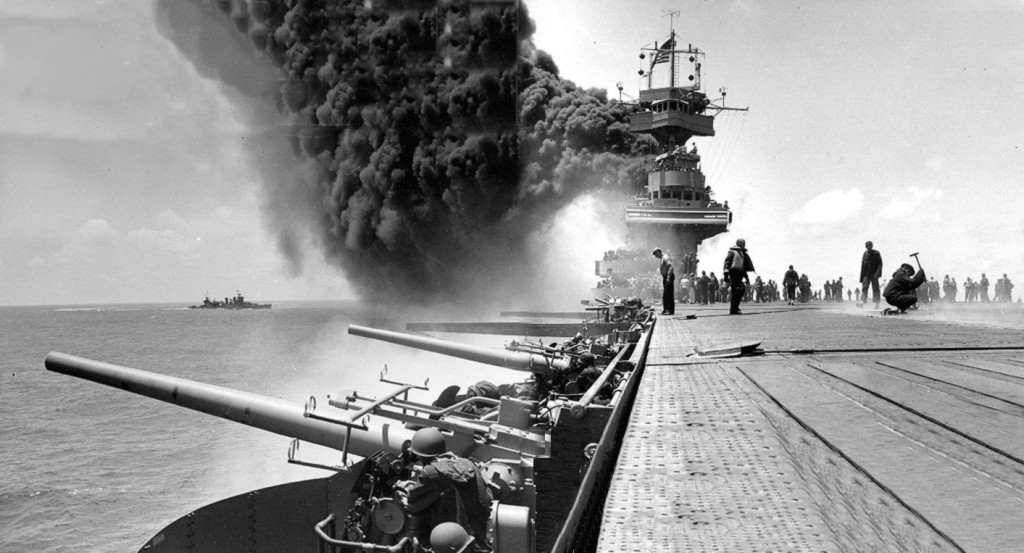(W)Archives: The Battle of Midway and What Defeat Looks Like

This week marks the anniversary of the turning point of the Pacific War between the United States and its Allies and Imperial Japan, which came with the Battle of Midway in early June 1942, a scant six months into the war.
The main action occurred on June 4. The next day, the U.S. Navy intercepted and partially decrypted a cable from Admiral Chuichi Nagumo, Commander of the Japanese First Air Fleet, to the Commander-in-Chief of the Japanese Combined Fleet, Admiral Isoroku Yamamoto, and the Navy General Staff in Tokyo.
The recoverable parts of Nagumo’s cable, which is available to researchers at the National Archives in College Park, Maryland, gave a terse blow by blow of the battle of the previous day. In the first third of the text, the Japanese have attacked Midway and then been struck in return by “over 100 [American] planes of which over 50 were shot down, but remainder scored [unrecovered code groups] bomb and torpedo hits.” Those hits were substantial: the carriers Akagi, Kaga, and Soryu were “put out of action” and the Japanese admiral has shifted his flag to the cruiser Nagara. The other Japanese carrier, the Hiryu, struck back, claiming three hits on an American ship. Then the Americans struck again and the Hiryu was forced to withdraw, tangling in the process with two American “Hornet-class carriers,” one of which it damaged. This was a reference to the Yorktown, which sank that day. (Actually, the Japanese were confused about the nomenclature: the Hornet, another carrier that took part in the battle, was a Yorktown-class ship, not the other way around.)
The cable closes with a hammer blow: “Soryu sank. Kaga also sank.” “Akagi heavily damaged” and unable to move. “Hiryu damaged…but believe [she] will be able to proceed.” Nagumo had lost and he knew it. Things would only get worse. In fact, on June 5 the Japanese were forced to scuttle the Akagi, a ship which Yamamoto had once commanded, and the Hiryu, as well. Yamamoto ordered the Japanese to disengage and in doing so, may have saved the Japanese from a worse catastrophe: American airstrikes on capital ships stripped of air cover.
The final toll: The United States lost the Yorktown and a destroyer. Japan lost four aircraft carriers, a cruiser, and quite possibly on that day they also lost the war.
Mark Stout is a Senior Editor at War on the Rocks. He is the Director of the MA Program in Global Security Studies and the Graduate Certificate Program in Intelligence at Johns Hopkins University’s School of Arts and Sciences in Washington, D.C.

